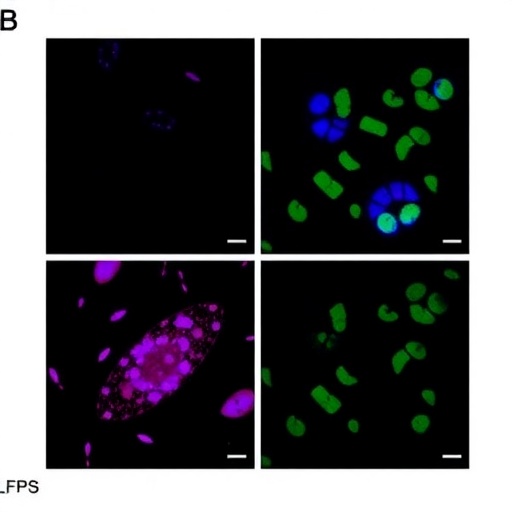
A recent study published in “European Geriatric Medicine” sheds light on a groundbreaking estimation equation designed for assessing appendicular skeletal muscle mass, particularly within the context of rehabilitation for stroke patients. This provocative research, conducted by a team led by experts Hori, Yoshimura, and Wakabayashi, aims to enhance our understanding of muscle mass evaluation and its correlation to functional recovery post-stroke. The implications of this research are vast, offering insights that could refine rehabilitation strategies and ultimately improve patient outcomes.
As stroke prevalence continues to rise globally, there is an increasing need for effective rehabilitation techniques and accurate assessments of recovery. The loss of muscle mass is a significant consequence of stroke, contributing to functional impairments that greatly affect a patient’s quality of life. By focusing on appendicular skeletal muscle mass—a key component in maintaining mobility and strength—this study addresses a critical component in the rehabilitation process. The researchers recognized that accurate measurement and evaluation of muscle mass could be the cornerstone in tailoring rehabilitation approaches for individuals recovering from stroke.
In traditional rehabilitation settings, clinicians often rely on various indirect methods for assessing muscle mass. However, these methods can sometimes be inaccurate or cumbersome, potentially delaying critical interventions. Hori and his colleagues have developed an innovative estimation equation that promises to provide a more reliable and user-friendly approach to assessing muscle mass in real-world clinical settings. Their work meticulously validates the diagnostic accuracy of this equation, showcasing its potential to transform rehabilitation practices.
The significance of this research lies not just in the development of a new estimation equation but in its validation process. The authors painstakingly tested the equation against established standards, ensuring that the results would be both accurate and clinically applicable. This thorough validation provides confidence to healthcare professionals who may adopt this equation in their practice, knowing it has been rigorously tested for reliability. Patients stand to benefit immensely, as improved assessments can lead to more personalized rehabilitation plans that facilitate recovery more effectively.
Moreover, the predictive capabilities of the estimation equation present another layer of utility. By correlating skeletal muscle mass with functional outcomes, the equation assists clinicians in anticipating recovery trajectories for stroke patients. Understanding how muscle mass relates to functional advancements can shape intervention strategies, enabling rehabilitation teams to prioritize and adjust treatments based on individual patient needs.
This nexus between muscle assessment and functional recovery represents a significant step forward for stroke rehabilitation. Ensuring that patients regain not just the ability to perform daily activities but to thrive post-stroke is a gradual process that requires insightful methodologies. The need for holistic and evidence-based approaches in rehabilitation cannot be overstated, particularly in the context of our aging population, who are increasingly susceptible to strokes.
Beyond its applications in stroke rehabilitation, the findings may also present broader implications for the field of geriatrics as a whole. Sarcopenia, or the progressive loss of muscle mass associated with aging, poses a considerable challenge to elderly populations. The equation developed by Hori et al. may serve as a tool for geriatric practitioners to monitor muscle mass in various clinical settings, fostering better management of conditions related to frailty and functional decline in older adults.
Moreover, the integration of such estimation equations into digital health tools could facilitate continuous monitoring of muscle trends in patients. With the increasing adoption of telehealth and remote patient monitoring, the ability to track skeletal muscle mass dynamically offers an exciting frontier in personalized medicine. This adaptability could better inform healthcare providers and empower patients, enabling collaborative efforts in managing their health proactively.
In the realm of rehabilitation science, understanding the biological and physiological mechanisms underlying muscle growth and repair is also pivotal. The implications of the research extend to understanding how muscle training interventions, nutrition, and physical activities can synergistically enhance recovery. As such, the development of a robust estimation equation for appendicular skeletal muscle mass is not merely a clinical tool—it represents an essential piece of a much larger puzzle regarding rehabilitation and recovery.
Additionally, this study underscores the importance of interdisciplinary collaboration in addressing complex health challenges. The integration of expertise from rehabilitation specialists, geriatricians, nutritionists, and exercise physiologists can lead to enhanced rehabilitation strategies that consider various aspects of a patient’s recovery journey. This collaborative spirit is evident in the authors’ multidisciplinary team, proud to forge new pathways in stroke rehabilitation research.
Future research directions may explore adjuncts to the estimation equation, such as factors that influence muscle regeneration or responses to specific rehabilitation protocols. Further investigations could include larger, more diverse populations to understand the equation’s applicability across different demographics. The path forward is rich with potential, promising advancements that could reshape care in stroke recovery.
The relevance of this estimation equation is amplified against the backdrop of an ongoing global health crisis, where the demand for effective stroke rehabilitation strategies has never been more crucial. With over 15 million people suffering strokes worldwide each year, this research holds the potential to impact countless lives. As professionals in medical fields strive to provide evidence-based practices, innovations like these become indispensable for ensuring patients achieve optimal recovery outcomes.
In conclusion, Hori and his team’s work represents a significant advancement in understanding and evaluating muscle mass within the context of stroke rehabilitation. As they validate their estimation equation and its applicability, one can anticipate ripple effects across multiple domains of rehabilitation and geriatric medicine. The integration of accurate muscle assessments into rehabilitation frameworks stands to not only enhance recovery pathways but also contribute to a greater understanding of post-stroke life and beyond.
As healthcare continues to evolve with scientific advancements and technological integration, tools like these estimation equations will be vital in addressing the complexities surrounding muscle health and wellbeing among vulnerable populations. The ongoing commitment to improving assessment and treatment methods remains integral to redefining rehabilitation success in the years to come.
Subject of Research: Estimation equation for appendicular skeletal muscle mass in stroke rehabilitation
Article Title: A practical estimation equation for appendicular skeletal muscle mass in stroke rehabilitation: validating diagnostic accuracy and predicting functional outcomes
Article References:
Hori, K., Yoshimura, Y., Wakabayashi, H. et al. A practical estimation equation for appendicular skeletal muscle mass in stroke rehabilitation: validating diagnostic accuracy and predicting functional outcomes.
Eur Geriatr Med (2025). https://doi.org/10.1007/s41999-025-01280-2
Image Credits: AI Generated
DOI: 10.1007/s41999-025-01280-2
Keywords: stroke rehabilitation, skeletal muscle mass, estimation equation, diagnostic accuracy, functional outcomes, geriatrics, personalized medicine, interdisciplinary collaboration.
Tags: accurate assessments in stroke rehabcorrelation between muscle mass and functional impairmentsestimating appendicular skeletal muscle massfunctional recovery after strokeimpact of muscle loss on recoveryimportance of mobility and strength in rehabilitationimproving patient outcomes post-strokeinnovative approaches to stroke recoverymuscle mass evaluation methodsrehabilitation strategies for stroke patientsresearch on muscle mass in geriatricsstroke rehabilitation techniques




